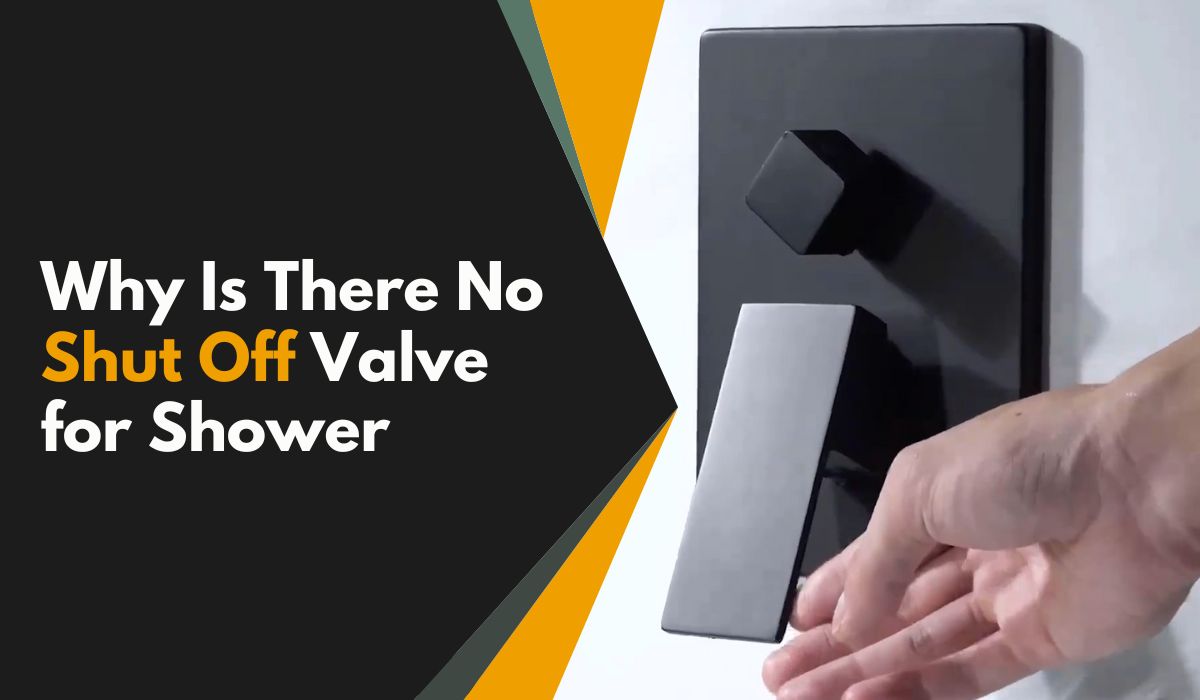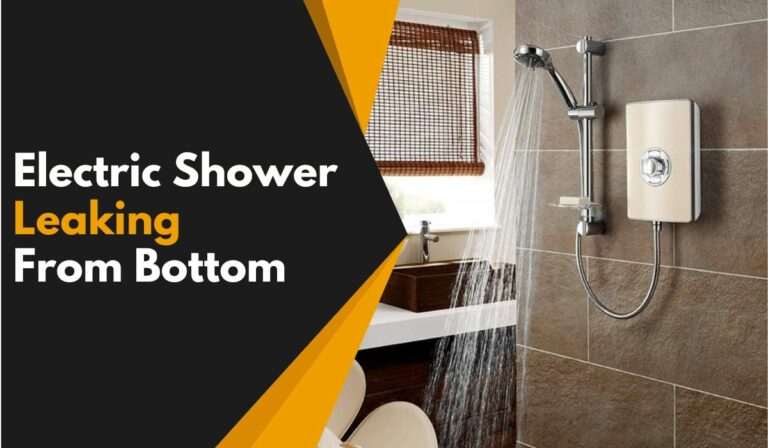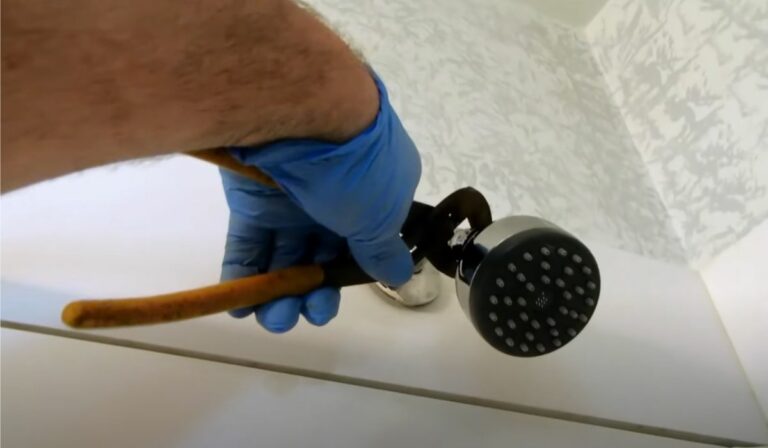Exactly Why Is There No Shut Off Valve for Shower System?
It’s not exactly a mystery! But like you, a lot of people do wonder why is there no shut off valve for shower. The strange fact is that these bathrooms come with individual shut-off valves for toilets and sinks. But oddly, not for the shower system and sometimes the bathtub. Why is that so?
Usually, there is no shut-off valve for the shower to avoid plumbing complications and for cost-cutting measures done by builders in construction. It can also be due to limited access space.
I will discuss the reasons and also address more information on the shut-off valve in this guide today!
Why Is There No Shut off Valve for Shower in Bathrooms?
I’ve tried to find the exact answer to why there is no shut-off valve for the shower faucet. Looks like there’s not much demand or need for a separate shut-off valve for a shower system in a bathroom.
Also, since the location of a shut-off valve can be confusing, it may further complicate the plumbing structure. Not to mention, shutting off the main supply of a house is not a tricky step to take.
Mainly, I have found three possibilities for the absence of shut-off valves for a shower system in a bathroom.
1. To Cut Down the Construction Cost
Some people say that builders skip using separate shower shut-off valves to cut down the overall cost of construction.
It is also said that in a few regions, certain building codes require no shut-off valve installation for showers. So, builders omit the valves as the local regulations have no such compliance.
2. Fewer Convenient Access Points
Sinks and toilets usually come with ample accessible spaces underneath. However, this is not the case with showers and bathtubs. There’s a lack of accessible space to install the shut-off valve easily.
In some cases, it is the lack of a dry area for accommodating the shut-off valves. It might be possible to add these valves through access panels. However, this will cost an aesthetic disaster for adjoining rooms. This is especially true for areas that are not much concealed.
3. Lower Necessity Area
Sinks and toilets come with quite a complicated plumbing system. Unlike showers that typically include simple structures. It makes more sense to have separate shut-off valves in the areas with multiple water supplies. As those are more prone to needing repairs.
This is why it is a priority for plumbers to install shut-off valves in areas like toilets and sinks where the risks of leaks and similar damages are greater.
Do Showers Usually Have Shut off Valves?
Depending on its need in a bathroom, a shut-off valve is installed for the fixtures. Does every bathroom have a water shut-off valve?
Almost every bathroom has one or more water shut-off valves for its different fixtures. These are generally available for the bathroom sink as well as the toilet. So that for different complicated plumbing troubleshooting, it is easy to isolate that area alone.
Now do showers have a water shut-off valve?
Some showers do have a water shut-off valve while others don’t. This depends solely on the plumbing structure of your household. However, in a typical case, showers don’t come with a separate shut-off valve.
This is why when fixing a broken shower handle that has water running on or when replacing a leaky electric shower at the base, the main water supply line has to be disconnected.
Where Is the Shut off Valve for the Shower?
Suppose the shower system that you own comes with a shut-off valve. Now how do you find it? Since the shower water shut-off valve location can be unspecified.
Typically, the shut-off valve for the shower will be available behind the wall it is connected to. This can also be accessible through a panel of the system.
Check the following locations to find and access the shut-off valve for the shower if available.
Access Panel
The location of the access panel is typically in an adjacent closet or room. You might find this area near the other side of the shower’s plumbing wall.
Open this access panel set and look for the valve behind it. Sometimes the access panel is installed later after a plumbing repair. In that case, it’s quite unlikely you will find the shut-off valves there.
Shower Underneath
It is possible to discover the shut-off valve for the shower directly underneath it. This is especially true for homes that come with a crawl space or basement. You need to observe the pipes underneath to check whether there are any attached shut-off valves there.
In some cases, a shut-off valve is available. This covers a specific area of the bathroom, and the shower could be included.
PEX Piping with Manifold System

Some homes come with PEX piping with a manifold system for the distribution of water. In this case, locating the shut-off valve is comparatively easier. You will find a shut-off valve for individual fixtures in the manifold and there will be marks to quickly identify.
Turning off the Water If There’s No Shut off Valve
Now let’s say you don’t have a separate shut-off valve for the shower. In this case, how do you shut off the water to your shower?
To shut off water to your shower when a separate shut-off valve is not available, you need to use the main shut-off valve. This is the valve that is used for the whole house’s water supply.
The location of this main valve can vary. However, typically you would find it near the water meter. Or this could be in the area where the water enters your house.
Now there could be some differences based on what type of residence you are living in.

Shutting off the Water to Shower in a House
If you live in a house, then the main shut-off valve must be located outside. In some structures, the valve might be available inside the home.
To find the valve, follow the water meter in a straight line. Go towards the exterior walls following the line. Find the access panel and look behind it for the valve.
Or you can look inside the house in the utility closet of the bathroom. It can also be in the basement. If the valves come with a screw, you will need to use a screwdriver. Otherwise simply rotating it in a clockwise direction will be enough.
Shutting off the Water to Shower in an Apartment
For an apartment, the location of the water shut-off valve is often under the bathroom. If you can’t find it in the bathroom, it could be near the kitchen sink. Rotate the main valve in a clockwise direction to turn it off.
Shutting off Water to Shower in a Mobile Home
Mobile home could be a rather unfamiliar term to many. It is basically a home that could be transported. In this case, the valve will be situated underneath the structure.
These homes do come with individual shut-off valves. So make sure you have checked for them. If not available, you can simply access the water line that is running beneath the mobile home.
You might need to detach the siding outside the mobile home and then find the access. And you will need a flashlight or headlamp to comfortably check the access panel.
Following the main water line, you can find the rest of the plumbing until you reach the valve. In most cases, mobile homes come with two shut-off valves. You need to turn off both.
Installing Shut off Valve for Shower – Do You Need To?
Adding shut-off valves to the shower might be something you want to consider. Having an additional emergency shower shut off will indeed make repairs easier.
However, is it really necessary to go through an entire installation process of a shut-off valve? Since in some cases, you may have to cut walls to access panels.
Is It a Legal Concern?
First and foremost, you want to make sure this is not mandatory compliance. Depending on where you live, the plumbing code might require a separate shut-off valve for each fixture.
This is rare but you should still consult with a local professional. Someone familiar with your area’s regulations. If this is the case, you must install one. If not, then there’s more to discuss.
Once you get the legal complications out of the way and ensure this is not a mandated step to take, you can make the choice based on other factors.
Installing Shut off Valve for Shower by Choice

Installing a shut-off valve for the shower will provide you the ease of isolating only the shower system whenever there’s a need for repairs. People usually go for ball valves because these are easier to use.
However, having a separate shut-off valve will help when there’s a need of shutting off the shower water supply for an extended period. The likelihood of such a need is relatively low, to be honest.
Also, if you know the location of the main shut-off valve of your house, then using it won’t take much effort or time. Unless the location of the main shut-off valve is trickier to access. Again something less likely to be the case.
However, if you are sure having a separate shut-off valve for the shower is necessary, go for it. Make sure you consult a professional regarding the installation. Faulty installation of the valve can lead to dealing with kettle-like sounds in the shower.
Wrapping Up
And now you know why is there no shut off valve for shower. I’ve also discussed how you can access the valve if it’s available plus some ideas on turning off the water when there’s no shut-off valve.
Turning off the water in the shower should not be a complicated thing to achieve. Whether or not this valve is available.
That’s it for today! I will be back with a similar guide soon. Take care till then.



![Single Handle Shower Faucet Is Hard to Turn Off [Solved]](https://faucetfam.com/wp-content/uploads/2023/06/Single-Handle-Shower-Faucet-Is-Hard-to-Turn-Off-768x448.jpg)

![Single Handle Shower Faucet No Hot Water [Troubleshooting Guide]](https://faucetfam.com/wp-content/uploads/2023/06/Single-Handle-Shower-Faucet-Has-No-Hot-Water-768x448.jpg)

![Water Drips When Shower Is Off and Diverter Is Engaged [Solved]](https://faucetfam.com/wp-content/uploads/2023/06/Water-Drips-When-Shower-Is-Off-and-Diverter-Is-Engaged-768x448.jpeg)